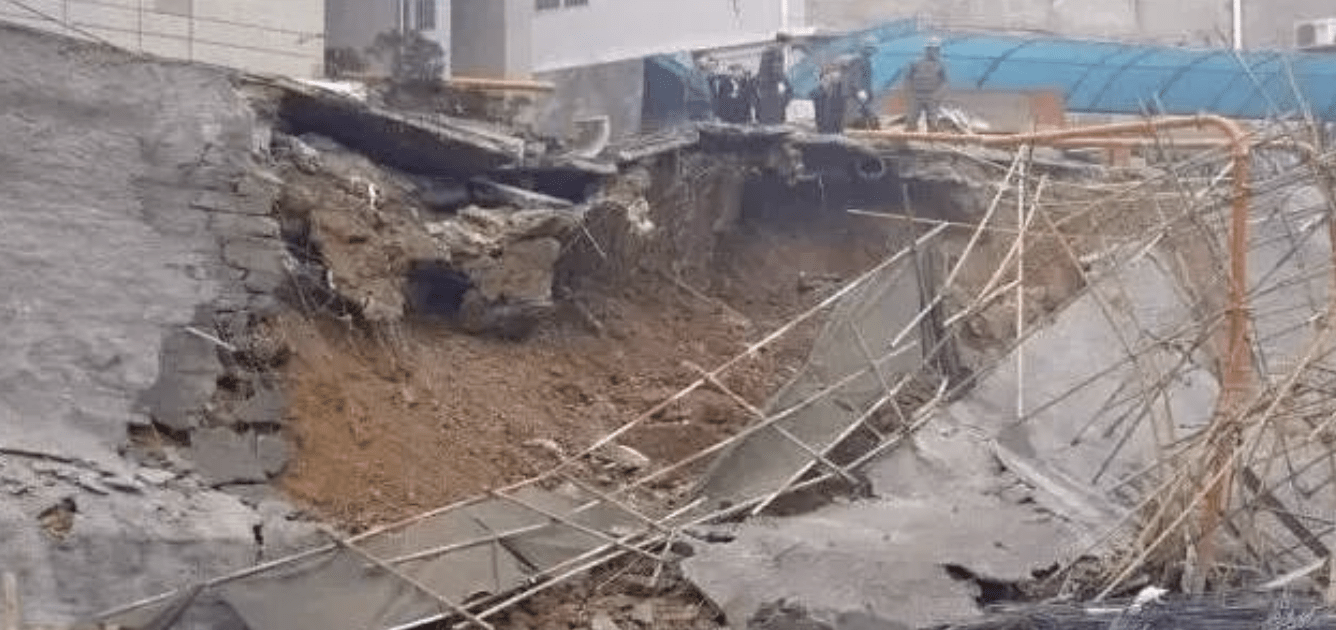Foundation pit collapses are among the most critical risks in construction projects. Understanding the failure mechanisms can help engineers and contractors implement proper safety measures. This article analyzes 9 types of foundation pit failures, supported by real-world case studies, to improve construction safety and compliance with Google SEO ranking guidelines for construction-related searches.
1. Overall Instability (Global Failure)
Overall instability occurs when a sliding surface forms in the soil, causing the retaining structure and surrounding soil to collapse. Typical signs include:
- Retaining wall tilting outward at the top
- Wall base shifting inward
- Heaving at the pit bottom
- Ground subsidence outside the pit
Case Study: Longtan Sky Garden Collapse
- A 30 m-wide section showed cracks and settlement at the slope crest.
- Heavy rain accelerated the failure due to:
- Over-excavation without timely support
- Poor drainage, leading to water accumulation
- Leaking underground pipes weaken soil strength
2. Bottom Heave (Basal Uplift)
Bottom heave happens due to:
- Elastic rebound from deep soil unloading
- Pressure differences causing plastic soil flow
Consequences:
- Ground settlement outside the pit
- Damage to adjacent structures
Solution:
- Soil reinforcement in passive zones to improve stability
3. Retaining Structure Overturning
Common in gravity or cantilever retaining walls, where soil pressure causes the wall to rotate inward.
Case Study: Wuhan Torch Building
- A 10 m-deep excavation with embedded rock-socketed piles failed due to:
- Weakened clay from water infiltration
- Pile fractures from uneven stress distribution
- Emergency backfilling and additional anchors stabilized the structure.
4. Retaining Structure Sliding Failure
Caused by insufficient foundation bearing capacity, leading to wall displacement.
Case Study: Tianheng Mansion
- A 5 m-deep pit in soft clay failed due to:
- Poor-quality cement-soil mixing piles
- Premature excavation before curing
- Heavy rainfall and improper surcharge loading
- Solution: Additional piles and grouting reinforcement.
5. “Kick Failure” (Toe Failure)
Occurs in single-braced pits where the wall rotates around the support point.
Case Study: Guangzhou Haizhu City Plaza
- A 104 m-long collapse killed 3 people due to:
- Delayed constructionis weakening the supports
- Unaddressed water seepage in weak layers
- Excessive surcharge loads
6. Structural Failure of Retaining Walls
Caused by cracking, bending, or crushing due to:
- Insufficient reinforcement
- Poor joint connections
Case Study: Hangzhou Metro Collapse
- A 75 m-long collapse killed 21 workers due to:
- Weak steel brace connections
- Progressive failure triggers a domino effect
7. Bracing/Anchor System Failure
- Anchor failure: Pull-out, rupture, or prestress loss
- Bracing failure: Often a systemic collapse due to weak nodes
8. Waterproof Curtain Failure
Leads to leakage, piping, or sand boiling, causing:
- External ground settlement
- Adjacent building damage
Main Causes:
- Poor construction quality (cracks/holes)
- Insufficient curtain depth
Summary of 9 Failure Modes
- Overall instability
- Bottom heave
- Retaining wall overturning
- Retaining wall sliding
- Foundation bearing failure
- “Kick” failure
- Structural failure
- Bracing/anchor failure
- Waterproof curtain failure


